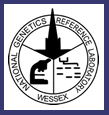| Fragment
length |
Consideration
has been given to the optimal length of fragment for different
post-PCR detection methodologies including heteroduplex analysis
(CSCE), Sequencing and Mass spectrometry based methods. In
general fragments up to 500bp give good results with the minimum
of effort. Longer fragments tend to require more optimisation
and result in less sensitive and less robust assays. |
| Buffer zone |
Techniques
such as heteroduplex analysis and sequencing can give poor
results for the bases close to the end of the fragment. Therefore
fragments were designed to include a redundant buffer zone
of at least 50bp at either end. |
| Universal
primer tails |
These allow
downstream processing of the PCR products over a wide range
of techniques using standardised reactions (e.g. fluorescent
analysis, MALDI-TOF, dHPLC). Two different tails are required
to provide orientation specificity. UniSeq sequencing primer
sites were chosen as the most suitable tags for this project. |
| Primer balance
and DNA concentration |
Since we
are using a three primer system the balance between gene specific
primers and universal primer is crucial for optimal PCR amplification.
DNA concentration has also been shown to have important implications
for both product yield and reproducibility of the PCR. We use
a standardised full factorial experiment to determine the optimal
concentration of each of these components in the reaction mix. |
| Universal
buffer system |
To date
it has not been necessary to deviate from standard amplification
conditions – these include both buffer components and
PCR annealing temperature |
| Exclusion
of polymorphic sites |
Up to date
information from public and private databases is used to exclude
polymorphisms from primer binding sites as well as information
collected by NGRL (Wessex) as part of the validation process. |
| Validation |
Specific
criteria have been formulated for validation of primer pairs
including product yield under standard conditions and absence
of non specific products. |

